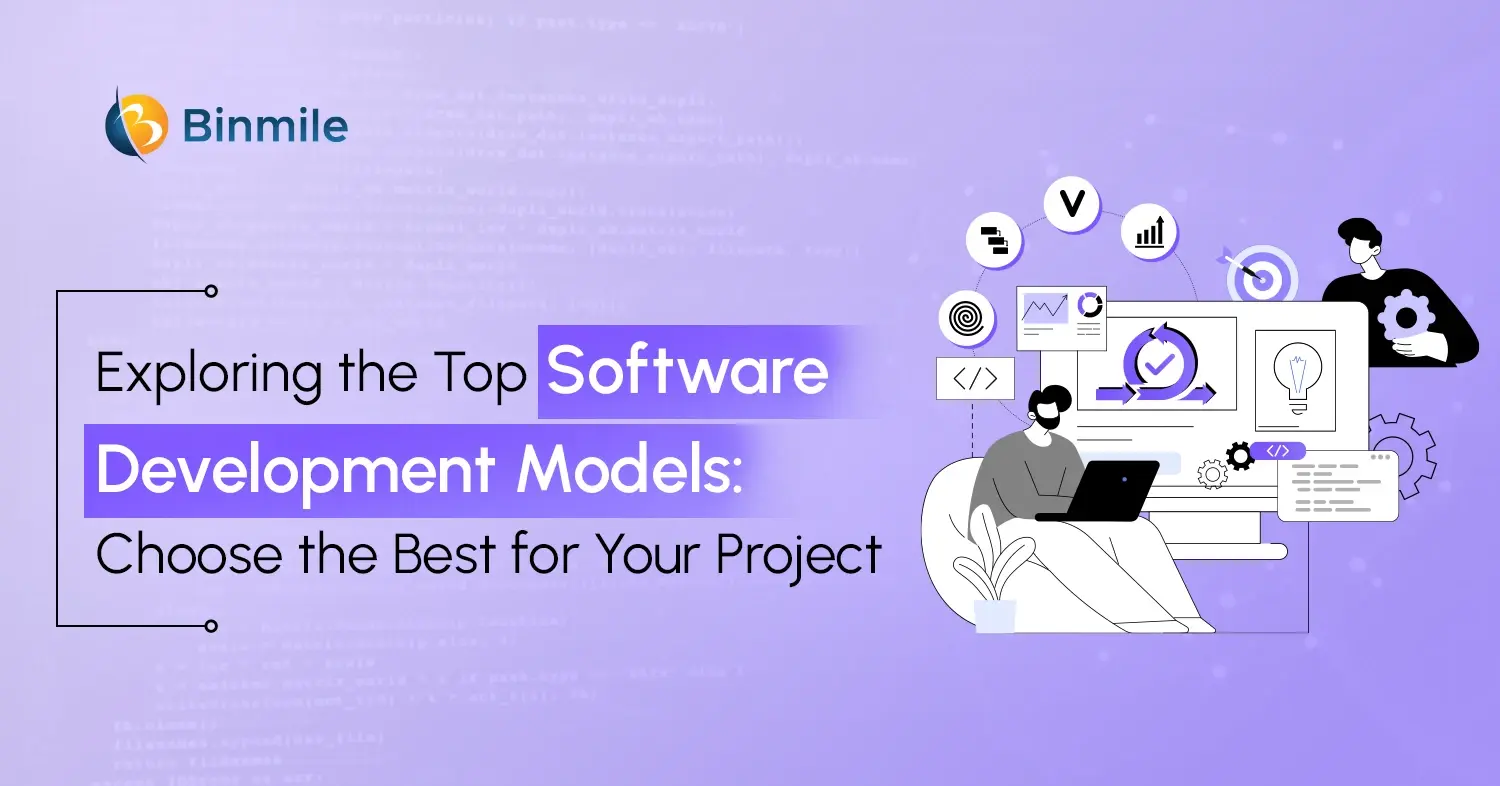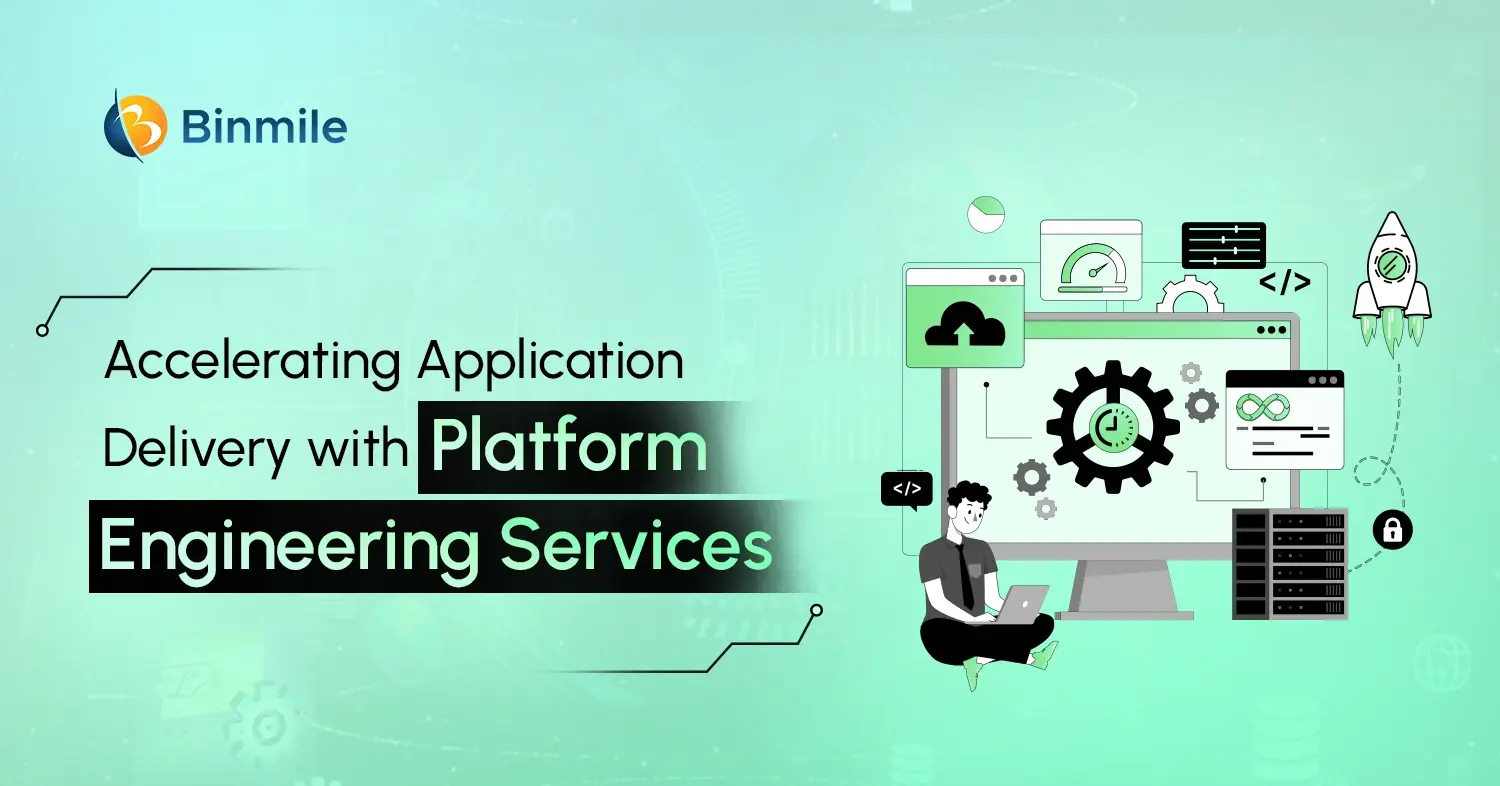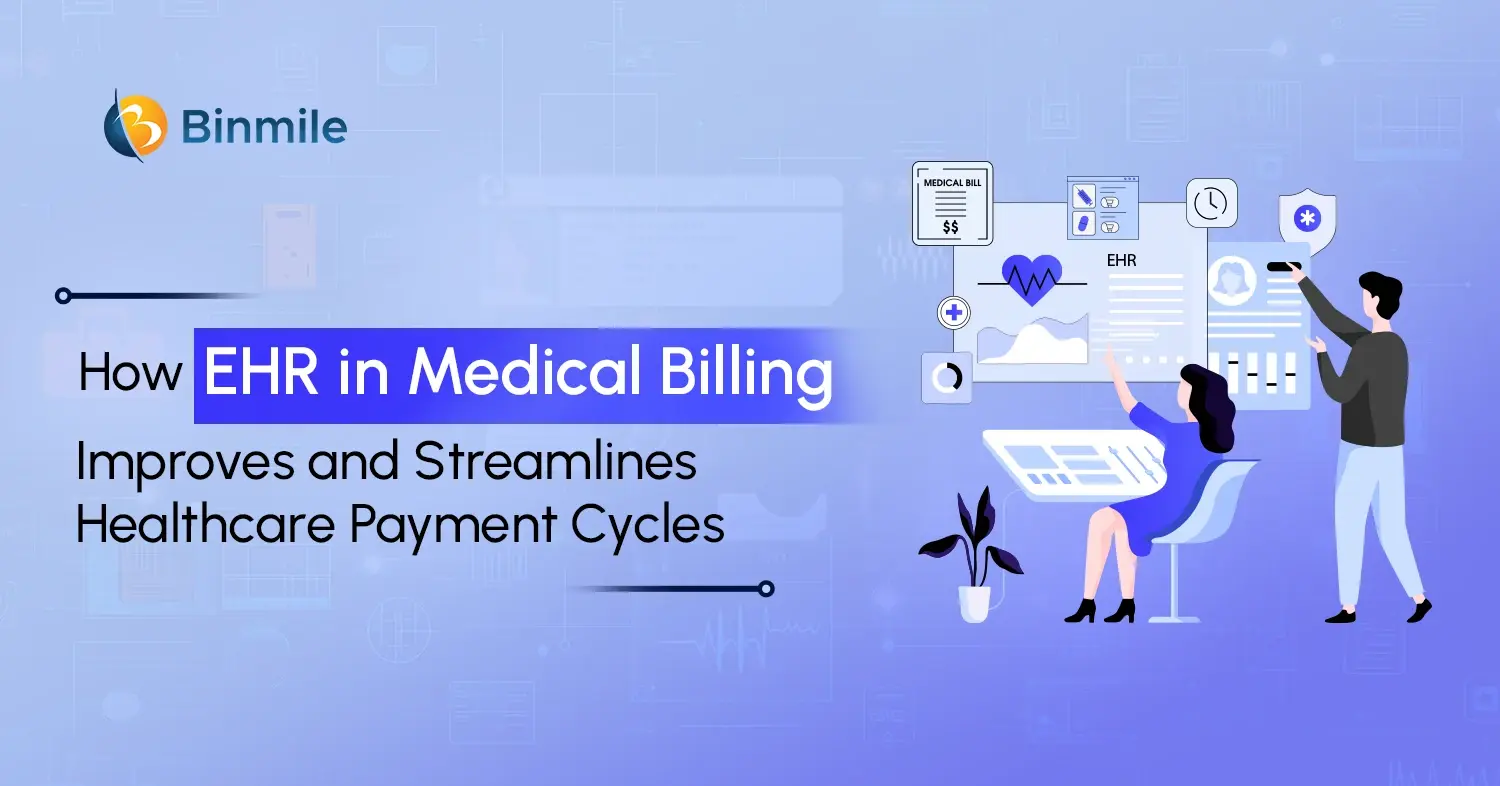A software development journey is not a linear set of processes. It is a coherent set of steps that starts with specifying, designing, implementing, and testing the product before it goes live and then maintains the software systems further for smooth and seamless performance. Therefore, software development teams across the industry look for ways to develop and deploy high-quality software at the lowest cost possible, preferably in the shortest amount of time. They need a strategic approach to successfully and effectively deliver products. Failure means more than monetary losses but also interrupted operations and reputational damage. Enter software development models in the picture. These models help developers plan out each stage in the software development cycle faster, more efficiently, and effectively.
In addition, software development models help organizations strategize the process, estimate costs, identify challenges, and collaborate and communicate with teams and customers. However, to make this possible, they must know and understand the software development model. This way they can choose the right mode that fits their organization’s requirements, stakeholders’ expectations, and the project. However, the market is full of several software development life cycle models, from SCRUM, Iterative, and Kanban to Spiral, all these models have their key features, pros, and cons. So, to select the perfect model, it is imperative to understand the models’ different aspects, advantages, and specifications. If you’re also wondering which software development to go for, then this blog is for you.
What is a Software Development Model?

The software development models encompass a wide range of methods and approaches. They are designed to enable businesses to streamline their software development life cycle to build software products with enhanced program functionalities and efficiency at the lowest costs and at a faster turnaround time. They are intended for software development teams to be able to
- Systematically organize work-related processes
- Ensure that the objectives are well-defined
- Conceptualize project estimates
- Streamline the solution to perfection
Another important component of the software development model is the Software Development Life Cycle (SDLC). The SDLC outlines the process for developing and maintaining a software product, encompassing various stages such as:
- Planning
- Prototyping and Designing
- Development
- Quality Assurance
- Launch
- Maintenance
Top Software Development Models Explained: Which One is Best for Your Development Needs?
Several software development models can be utilized to build digital products more efficiently and effectively. However, we’re listing out the top 7 of them, in no particular order.
1. Waterfall Software Development Model

The waterfall software development model is the oldest paradigm in which the stages are mandated not to be commenced unless the previous ones are fully completed in terms of processes and documentation. In other words, it mandates that if the previous development stage remains unfinished, it will not ensure the processing of another stage. According to the waterfall model, the completion of the previous step signals the start of the next development phase.
There are 4 phases in which the model works, these are:
- Planning: It’s a preliminary step to define obtainable goals and ways to satisfy them
- Risk analysis: It involves highlighting potential risks through rigorous examinations and creating prototypes to rule out vague requirements
- Engineering: It consists of features like coding, testing, and deploying software after proper risk assessment
- Evaluation: The program is evaluated on parameters like performance, etc., to decide whether repetition of the development cycle is needed
Key Features of the Waterfall Model
- It involves significantly less customer interaction during the development phase of the software product
- Once the product is finished, with all stages being duly verified, only then can it be launched for the end-users
- It rules out the possibility of expensive troubleshooting of issues, given how each development stage relies on the deliverables of the previous one
Pros of the Waterfall Model
- It’s best for projects with well-defined requirements & more control over processes
- It is a less iterative approach in which processes flow downward like a waterfall, from conception to testing, deployment, and maintenance
- It is a simple and the least complex model
- It is easily manageable, given that each stage doesn’t pass down onto the other until the previous one is verified
- It helps your development team to get an idea of how clients interact with the software and the environment in which it should be carried out
Cons of the Waterfall Model
- It doesn’t permit sporadic completion of the phases. They are done one at a time.
- As an internal process, the methodology focuses very little on the end user or client involved with a project.
- Delays testing until after completion
Go for the Water Model
- Your project requirements are well-defined and unlikely to change.
- There is a need for a sequential and structured approach, providing clear milestones.
- For shorter projects with predictable timelines and deliverables.
- When projects need to adhere strictly to regulatory or compliance standards.
2. Agile Software Development Model

It involves a group of models based on iterative development. The goal is to build high-quality software systems at reduced costs and in less time. Time-critical applications adopt the agile approach, a type of incremental model.
Key Features of the Agile Model
- It is employed because of code quality, early testing, and simple design.
- Using this model means having improved communication between a client and the software development team.
- Upon the completion of an iteration, progress can be reviewed to plan the next move with the team.
Pros of the Agile Model
- Improves customer satisfaction through rapid and continuous delivery of productive software
- It emphasizes people and interactions more than processes and tools
- The agile model ensures a great deal of interaction between customers/stakeholders, Developers, and Testers
- It facilitates cooperation between businesspersons and developers
- Permits technical excellence and great design
- It can be used to deliver working software frequently
- It is used because it regularly adapts to changing circumstances
Cons of Agile Model
- Less-structured teams easily go astray or run beyond the original scope of the project
- Long-term projects suffer from incremental delivery
- Constant interaction takes more time and energy for everyone involved
Go for the Agile Model
- Your project requirements are expected to change frequently throughout the development process.
- When regular communication and close collaboration among team members are critical for project success.
- There is a need to deliver small, functional increments regularly to gather user feedback.
- The project environment is dynamic and requires quick adjustments to respond to market or user needs.
Types of Agile Model
A) Scrum Agile Model
It is the most popular agile model in which iteration is known as a sprint, a relatively manageable tactic to allow easy tracking of a project’s progress. The sprint usually takes nearly 1-4 weeklong periods in which activities like planning, design, coding, testing, and deployment are carried out. At the end of the iteration/sprint, the work is examined, and new priorities are defined. Thereafter, the planning phase is put into motion when the next sprint starts. Activities defined in the sprints are irreversible. The scrum models are beneficial for larger initiatives in which developers are supposed to succeed the initiatives.
Go for the Scrum Agile Model:
- When results are expected immediately
- When the project is too ambiguous, with no well-defined duties
- When a project requires a highly custom-tailored development approach
B) Kanban Agile Model
This model doesn’t involve definite iterations. It mandates real-time capacity communication and total work candor. As part of agile development solutions, it adopts a flexible approach to process visualization, allowing the team to manage backlogs, set and shift priorities, assign responsibilities, and adapt based on evolving requirements. Progress and communication with the client can also be reviewed effectively using Kanban. The visualization aspect in this model enhances clarity of the workflow and can be easily shared with stakeholders for updates.
Go for the Kanban Agile Model:
- When the processes require the removal of unwanted processes
- When you require a model facilitating a seamless development process
- When you want to continuously improve the system
C) Extreme Programming (XP) Model
In this model, no matter whether the iteration has already been in progress, changes can be made, nonetheless. The XP approach focuses on developing and managing projects with enhanced efficiency, agility, and control. Based on the Agile Manifesto, the XP model is to be implemented in circumstances when you need a robust infrastructure, experienced resources, and a fully organized environment.
Go for the XP Model:
- When there is no communication gap between the client and the development team
- When there is a need for a quick reaction to a constant change in the project
- When projects require remote collaboration
Know the Difference: Waterfall Vs Agile Software Development Methodology
3. Incremental and Iterative Software Development Model

In this model, each iteration generates a product version that is evaluated later for the next steps to implement. Unlike the Waterfall model, which requires completion of the previous stage to green-light the following one, the iterative model works differently. It permits several iterations simultaneously, thereby allowing you to examine your product at every step and adjust your next plans according to the requirements.
What is the difference between Incremental and Iterative Software Development Processes?
People get these two intermixed, but there are some differences between them. For instance, in the incremental model, software development process methodologies are segmented into small, manageable portions called increments. Based on the quality of the previous version of each increment, step-wise improvements are made. However, in an iterative method, each cycle performs a systematic repetition of software development processes. Meaning that software development happens one iteration after another. It continues until the achievement of an optimal version of the product. Both models are complementary in character. Using them together is an ideal software development approach to achieve project deliverables.
- It allows for early detection of design issues and encourages customer feedback, leading to better final products.
- It promotes partial implementation of the software, which can be beneficial for budget management.
- It fosters continuous improvement and adaptation, ensuring the software evolves to meet changing requirements.
Limitations of Incremental and Iterative Models
- Integrating components developed in increments can be complex and challenging, requiring meticulous planning.
- Continuous planning, testing, and integration in each iteration can lead to significant management overhead.
- Frequent iterations may lead to changes in requirements, causing scope creep and impacting project timelines.
- Initial increments may not deliver a fully functional product, leading to incomplete early deliverables and delayed feedback.
Go for Incremental and Iterative Models
- When there are many upfront requirements that can be evolved eventually
- When priority-wise requirements are set
- When there is a need for quick delivery of basic functionality
- When there is a project with extended development schedules
- When a domain is new to the team
- When there is a project with new technology
4. V Software Development Model
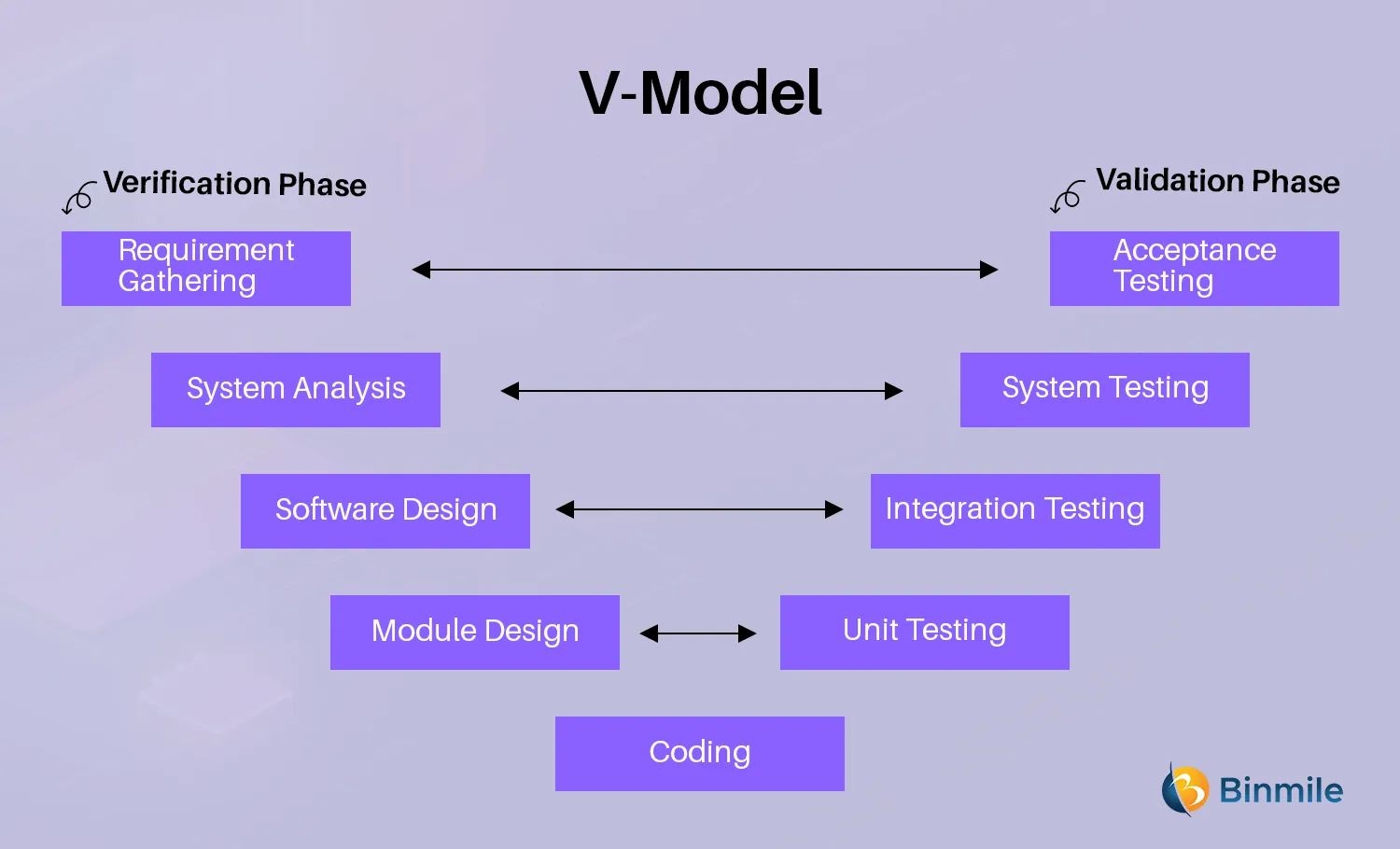
Also called the four-tier model, the V-model is an offshoot of the Waterfall model, in which testing is applied in each development stage. Testing options can be rearranged, and more options can be added, depending on the project’s requirements. V-mode is known as expensively resource-intensive, as its number of tests requires a lot of time and investment of money to process. However, it is considered efficient in projects, like healthcare software, that need to be built with the highest level of quality and no technical snags. They are divided into 5 phases, which are:
- Business Requirement Analysis: This involves understanding project requirements from the client’s side.
- System Design: It requires analyzing the viability of a proposed system.
- Architecture Design: It includes selecting an architecture pattern that can understand everything, such as the list of modules, database tables, etc.
- Module Design: In it, the system is broken down into small modules.
- Coding Phase: It involves a suitable programming language, guidelines, standards for coding, etc.
Pros of V-Model
- It emphasizes a well-structured development process, where each phase corresponds to a testing stage, ensuring thorough quality checks.
- It offers clear milestones and deliverables, making project management more predictable and transparent.
- It facilitates early detection of defects, reducing the total cost of ownership of development by preventing late-stage project overhauls.
- It also supports rigorous documentation, which is crucial for maintaining standards and knowledge transfer.
Cons of V-Model
- It can be inflexible with very little room for changes or deviations from the plan
- It requires a significant amount of resources, including time, budget and personnel
- Overemphasis on Testing led to production delays and increased costs
Go for V-Model
- When you have well-defined and fixed requirements
- When there are ample skilled technological resources
- When failures in developed systems are not objectionable
5. Spiral Software Development Model
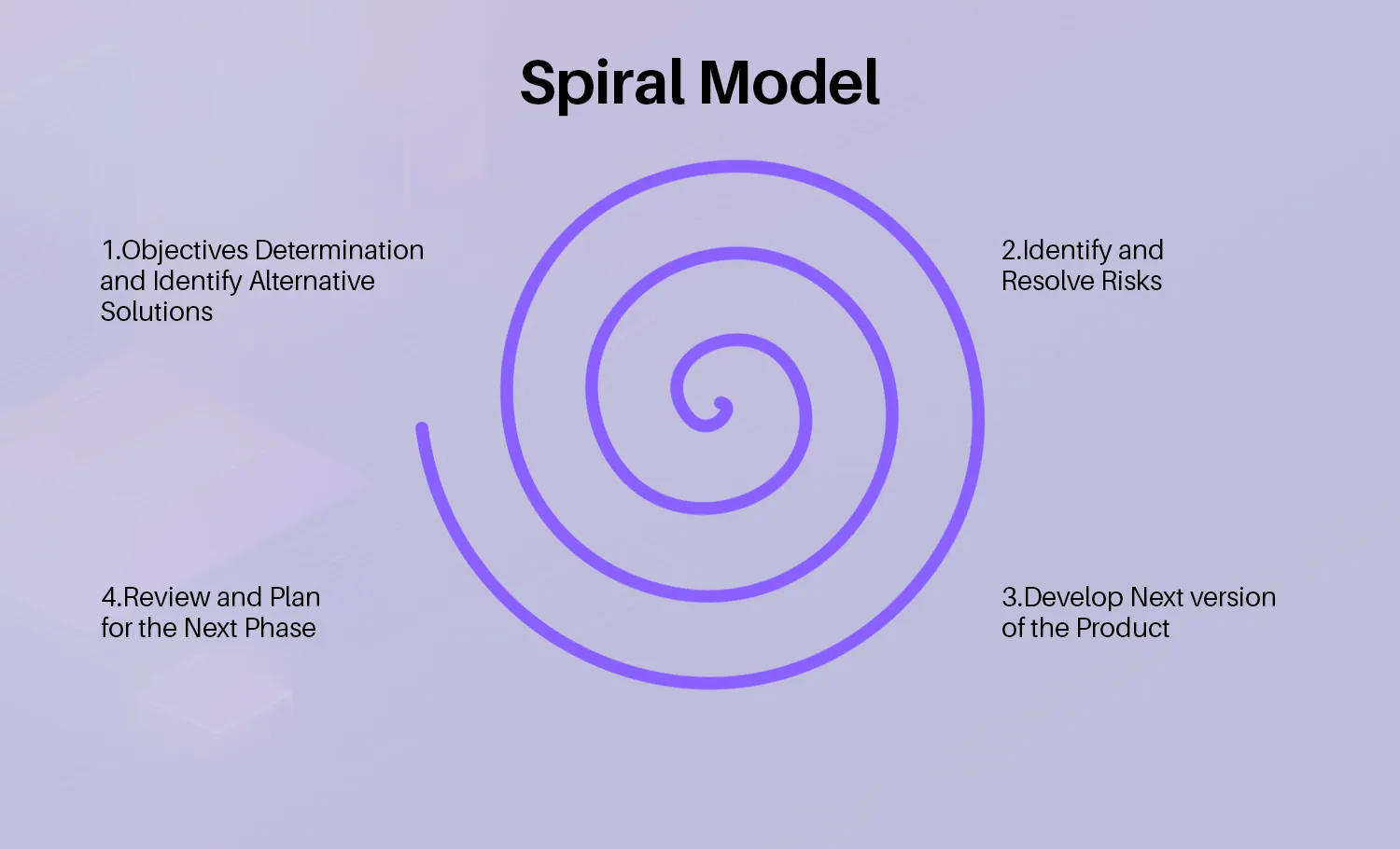
The spiral model is a risk-analyzing software development model in which spirally created activities are processed in the sequence they are selected based on the risk assessment. The spiral model is best suited to highly complicated and innovative projects. Every iteration in this model is based on the nature-wise selection of objectives. The iteration involves four processes,
- Determining objectives
- Identifying risks
- Development and testing
- Prioritizing the next iteration
Pros of the Spiral Model
- Its flexibility facilitates customer feedback incorporation, ensuring the product meets evolving requirements.
- It supports early identification and mitigation of risks, enhancing project predictability and success rates.
- It allows for the concurrent development of different project segments, optimizing resource utilization and timeline efficiency.
Cons of the Spiral Model
- It could be costly for a smaller project due to the project repeatedly passing through different phases in iterations
- Excessive documentation due to the number of intermediate stages
- The risk analysis aspect of the project may require specialist expertise
Go for the Spiral Model
- When frequent software releases are expected
- When frequent changes are required in a project
- When long-term projects are not feasible
- When the project is benchmarked from medium to high-risk
- When there are projects with critical costs and risk analysis
- When projects are too sophisticated and vague
6. The Rational Unified Process (RUP) Software Development Model
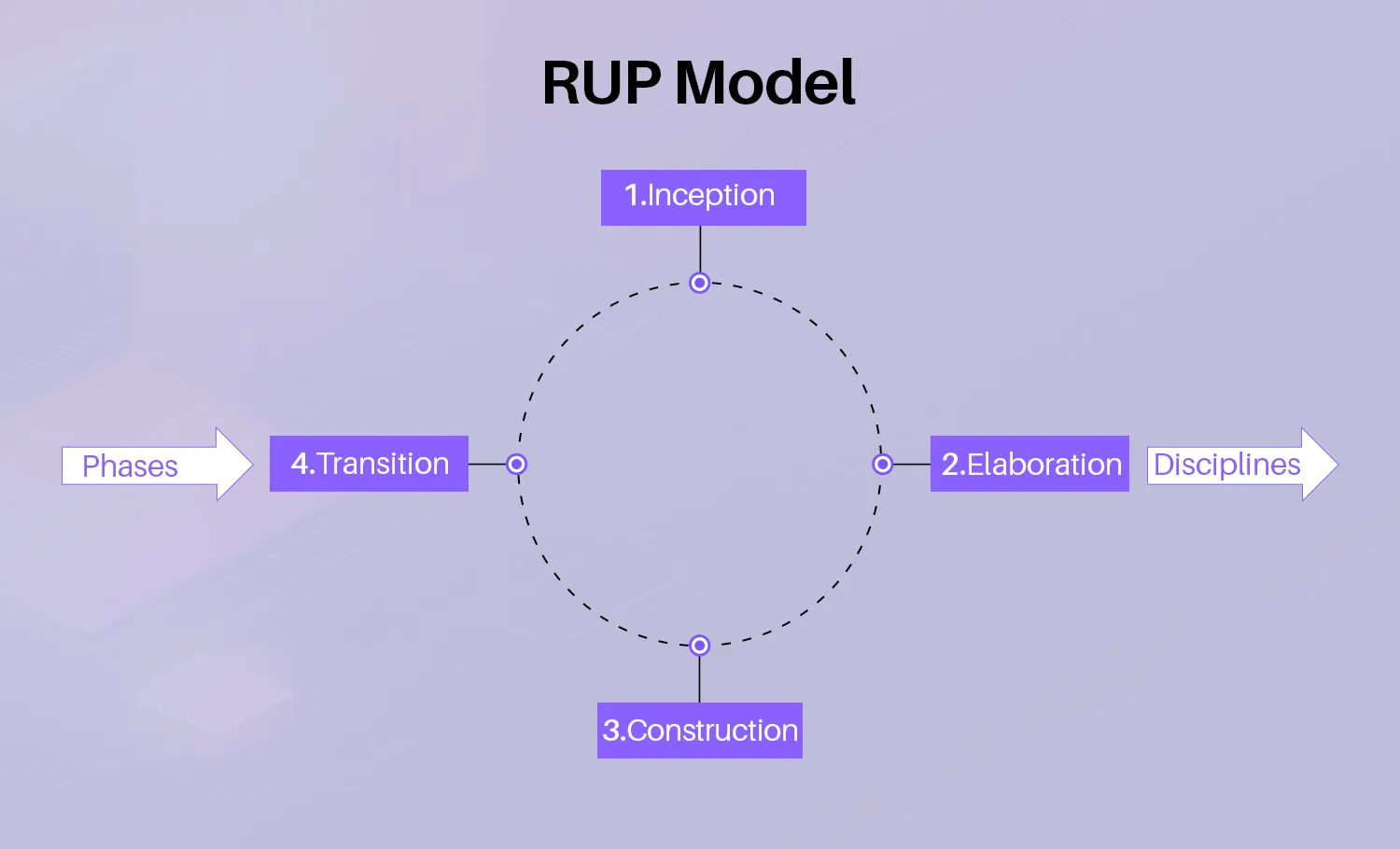
The Rational Unified Process (RUP) is an adaptable process framework that can be customized, depending on the project’s requirements. Created by Rational Software Corporation, RUP combines the linear process of Waterfall and iterative Agile approaches. The model involves four stages of development, such as –
- Inception
- Elaboration
- Construction
- Transition
Pros of RUP
- It allows both the linear part of the framework and iterations within the limits of a single stage.
- It consists of various tools that can be used to help in the coding of the final product.
- It helps you to operate business analysis, design, testing, and implementation all through the development process.
- It lets you build a customized product in steps rather than designing it in one continuous process.
Cons of the RUP Model
- The amount of documentation required for RUP can be time-consuming and expensive
- Its emphasis on ongoing integration makes it challenging to use for those working on projects with multiple development streams
- It is a rather complex method, which makes its implementation challenging and requires expertise to work on
Go for the RUP Model
- When changes in the requirements are constant
- When the data and information you have are accurate
- When there is a requirement for certain integrations throughout the development process
7. Prototype Software Development Model
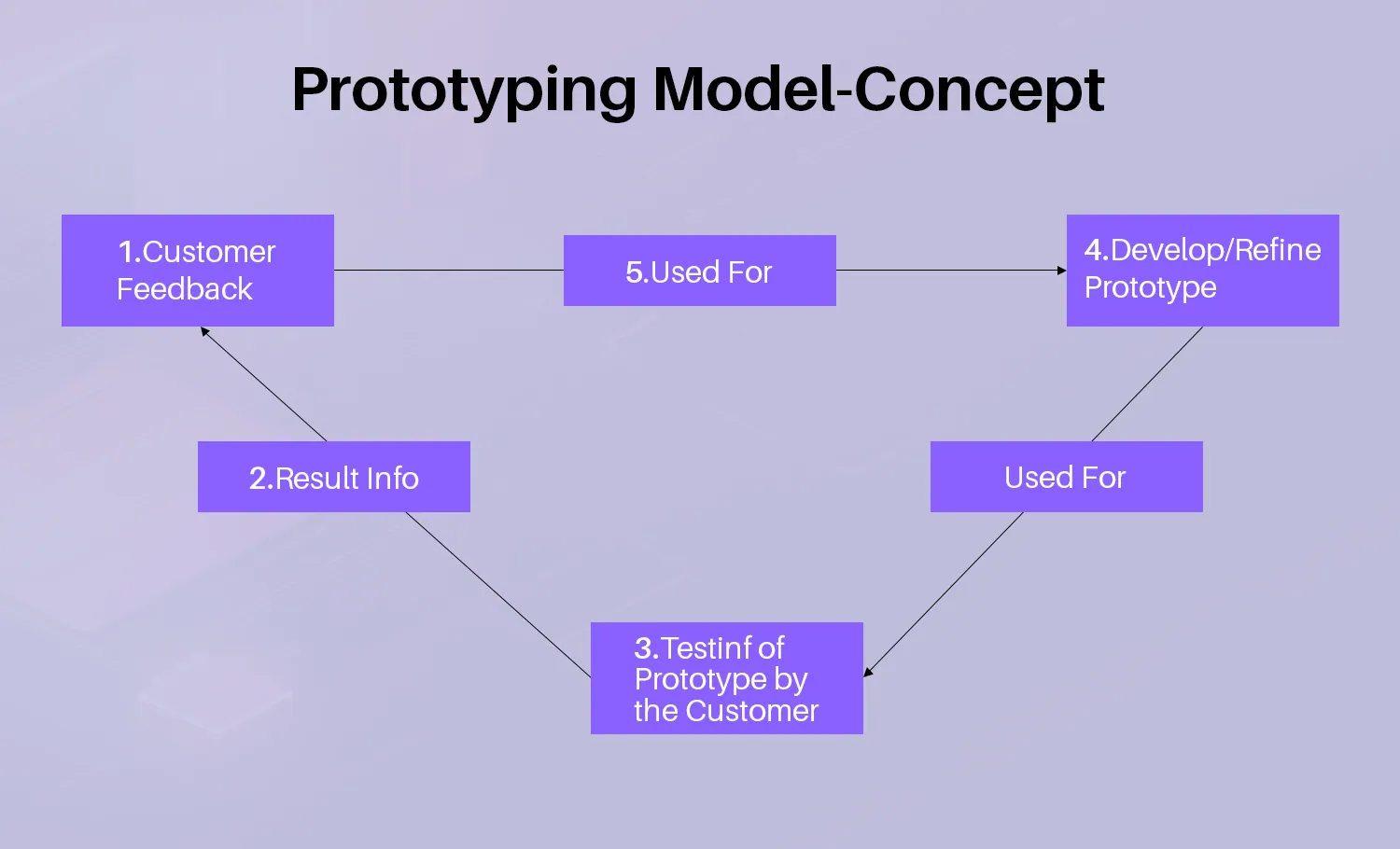
A prototype model is an important part of the software development process in which certain features or aspects of a product are simulated to offer its functioning version, to be used later as a sample of an actual product. The need for software prototyping is to fetch key inputs regarding the functionality and operability of the actual product. In turn, it affords the possibility of developing a final product efficiently.
The reason behind implementing software prototyping stems from the fact that it helps developers get important feedback from the users. As a result, it enlightens the client and the contractor/developers about whether the built software product is compliant with the software specifications, as per how it was programmed. Moreover, it also enlightens the developers about the accuracy of early project estimates and whether the same can be achieved within the projected deadlines.
Pros of Prototype Model
- It improves the quality of requirements and specifications received by the developers
- It reduces time and costs in software development
- It boosts users’ involvement, allowing them to provide insightful feedback regarding the project
Cons of Prototype Model
- It continually refines the project based on user feedback, leading to the risk of the project scope expanding beyond the original plan
- The prototype is a working model, so users may need to correct it for the final product, leading to confusion and unrealistic expectations
- This model is costly in terms of money and time due to too much variation in requirements
Go for the Prototype Model
- When you need to apply in the analysis and design of systems, especially those related to transaction processing
- When designing better human-computer interfaces (HCI)
- When the requirement of a proposed system is not well-defined
- When the proposed system is still in the process of evaluation
- When it is essential to showcase how the desired product behaves
Searching for reliable custom software development? Our team delivers efficient, bespoke solutions to help your business succeed and meet evolving project demands.

Does that Mean Choosing the Right Model is Necessary?
Yes. That goes without saying.
Choosing the correct models in software engineering is what yields the best results for software engineering teams to fulfill organizational needs, stakeholders’ expectations, and the project’s development. Models should be chosen based on your company’s working style and corporate culture, apart from the testing stage and features included in the first version of the software. There is also a possibility that a company may go for different models for different projects, depending on requirements, budgets, and deadlines.
Also Read: Technical Debt in Software Development
Key Benefits of Choosing the Right Software Development Models
Let us explore some major advantages of picking the suitable software development model for your software development teams:

1: Strategic Goals Alignment
Selecting a well-defined software development methodology makes sure that the development process fits with both the project goals and the company’s requirements. Therefore, it helps the team stay focused on meeting specific goals by giving them clear instructions; thereby, this focused approach ensures that the product works as planned and makes the project run more smoothly. Taking the right method also makes it easy to keep track of progress and success by setting clear benchmarks and targets.
2: Enhancing Efficiency and Productivity
The right method cuts down on unnecessary work and streamlines processes, which leads to more work being completed. By choosing a methodology that meets your needs, you ensure proper resource use and clarity. This makes organizing tasks simpler and easier, thus expediting the development process and faster time-to-market. Because of this higher efficiency, the company gets a better return on its investments, and the growth cycle works better.
3: Ensuring Rigorous Quality & Compliance
The methodology helps you follow all the required standards and quality checks all the time during the development process, which lowers the chance of bugs or other performance-related issues. It also makes compliance easier, which naturally reduces or eliminates the risk of legal issues and makes sure the product meets the standards of the industry it belongs to.
4: Higher Flexibility and Adaptability
A good method can be changed to fit new project requirements. Agile methods allow for iterative development, which makes it easier to adapt to changing market conditions and customer standards. This flexibility makes sure the project stays useful and lets you change or update it without slowing down progress. For groups, it lets them make a finished product that meets changing business needs.
5: Risk Management and Cost Optimization
Deciding on the right method is also important for managing risks well. Teams can handle possible risks more effectively and keep the project on track if they are aware of them early on. Effective resource utilization also enhances cost management. By taking a structured approach, you can avoid delays and costs that aren’t necessary. This will help the project stay on budget while still producing good results.
Read More: Top Software Development Tools
How to Choose the Best Software Development Model for Your Project
Among a multitude of software development models to choose from, focus on those that afford value, quality, seamlessness, and innovation to prioritize your options accordingly.
Also, tie your objectives to the selection of a specific model. It involves certain considerations, such as –
- Does it (model) eliminate the need for manual coding?
- Does it improve reusability?
- Does it rule out the possibility of security breaches?
- Does it soften the load on the IT infrastructure?
- Can it accommodate the size and skills of the team’s software engineering capability?
- Does it solve the concerns & priorities of stakeholders and clients?
- Is it conducive to the software’s size and complexity?
Wondering how to choose the right software development models? Let’s help you figure it out with custom software solutions!

Final Thoughts on Software Development Models
Software development models offer an effective software development process despite the varied types of projects. They help the SDLC team to determine how the project gets developed successfully, without inviting any chance for technical snagging. However, each model has its features and is programmed to deliver results differently. But the bottom line remains the same: it aims at streamlining the development process and tuning it to your and end users’ expectations. Therefore, you need to understand what all these models are. Doing so will help you find the ideal model based on various parameters. These key factors include analysis, design, coding, demonstrative quality, and finally, the implementation of the product in a real environment.
In this blog, we explained the top 7 software development models used in software engineering. Hopefully, the in-depth analysis will help you find the best software development model for your project. To simplify the entire development process and ensure professional execution, hiring a company that provides software consulting services could be considered. The company’s expertise and knowledge bank will help you carry out your project requirements effectively, professionally, and timely.
Frequently Asked Questions
The most common outsourcing models include:
- Project-Based Model: Fixed scope, cost, and timeline for a specific project.
- Dedicated Team Model: A dedicated team of developers works exclusively on your project.
- Time and Material Model: Pay for the actual time and resources used.
- Offshore Development Center (ODC): A remote team operates as an extension of your in-house team.
- Staff Augmentation: Hire external developers to supplement your existing team.
While application development models offer numerous benefits, they also present challenges that developers and organizations need to consider.
Key Information:
- Benefits: Improved planning, better communication, and efficient resource utilization.
- Challenges: Potential for scope changes, complexity in managing iterations, and balancing flexibility with structure.
- Efficient Resource Utilization: Models contribute to the efficient allocation and utilization of development resources.
Yes, software project estimation can vary based on the chosen development model. Agile allows for flexible, iterative estimations as the project progresses, while models like Waterfall rely on a single, initial estimate. This makes selecting the right software development model crucial to align with the flexibility and accuracy needed for reliable software project estimation throughout the project’s lifecycle.
Software process methodologies are structured approaches used to plan, develop, and manage software projects. They provide frameworks like Agile, Waterfall, or Scrum to ensure efficiency, quality, and collaboration throughout the software development lifecycle.
Software process methodologies ensure quality control by implementing defined standards, regular testing, iterative reviews, and feedback mechanisms to identify and resolve issues early, ensuring reliable and high-quality software.
Challenges include a steep learning curve, the need for skilled modelers, and the complexity of creating accurate models. Additionally, not all projects may benefit from MDSD, especially small or simple ones.
